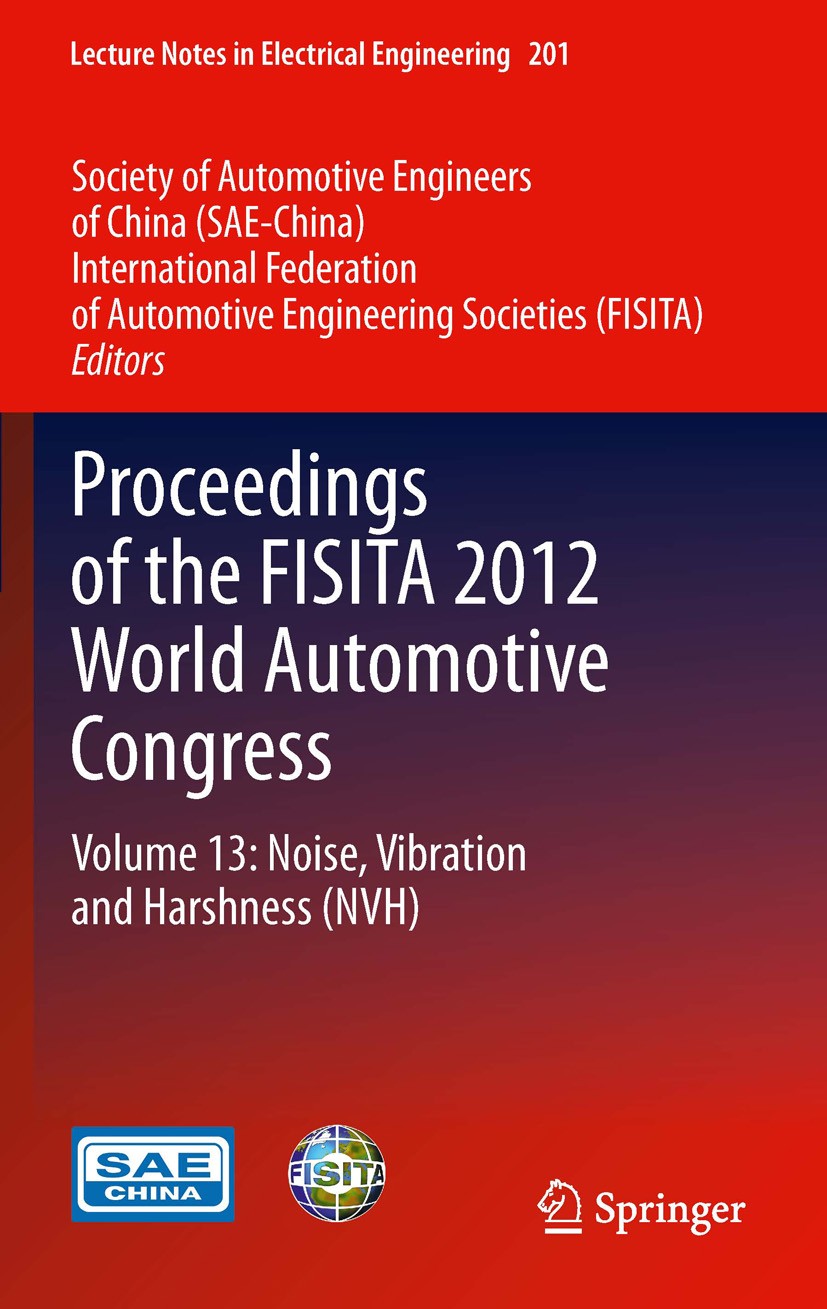| 书目名称 | Proceedings of the FISITA 2012 World Automotive Congress |
| 副标题 | Volume 13: Noise, Vi |
| 编辑 | SAE-China,FISITA |
| 视频video | http://file.papertrans.cn/759/758493/758493.mp4 |
| 概述 | Shows the advanced technologies in automotive industry of the world.The biennial FISITA World Automotive Congress is recognized as the leading international forum for the knowledge exchange in all are |
| 丛书名称 | Lecture Notes in Electrical Engineering |
| 图书封面 |  |
| 描述 | .Proceedings of the FISITA 2012 World Automotive Congress. are selected from nearly 2,000 papers submitted to the 34th FISITA World Automotive Congress, which is held by Society of Automotive Engineers of China (SAE-China ) and the International Federation of Automotive Engineering Societies (FISITA). This proceedings focus on solutions for sustainable mobility in all areas of passenger car, truck and bus transportation. Volume 13: Noise, Vibration and Harshness (NVH) focuses on: .•Chassis Vibration and Noise Control .•Transmission Vibration and Noise Control .•Engine Vibration and Noise Control .•Body Vibration and Noise Control .•Vehicle Vibration and Noise Control .•Analysis and Evaluation of In-Car Vibration & Noise .•Wind Noise Control Technology .•Vibration and Noise Testing Technology .Above all researchers, professional engineers and graduates in fields of automotive engineering, mechanical engineering and electronic engineering will benefit from this book. . .SAE-China is a national academic organization composed of enterprises and professionals who focus on research, design and education in the fields of automotive and related industries. FISITA is the umbrella organizat |
| 出版日期 | Conference proceedings 2013 |
| 关键词 | Body Vibration; Chassis Vibration; Engine Vibration; FISITA 2012; In-Car Vibration; Noise Control; Noise, |
| 版次 | 1 |
| doi | https://doi.org/10.1007/978-3-642-33832-8 |
| isbn_softcover | 978-3-662-51146-6 |
| isbn_ebook | 978-3-642-33832-8Series ISSN 1876-1100 Series E-ISSN 1876-1119 |
| issn_series | 1876-1100 |
| copyright | Springer-Verlag Berlin Heidelberg 2013 |
 |Archiver|手机版|小黑屋|
派博传思国际
( 京公网安备110108008328)
GMT+8, 2025-11-22 05:33
|Archiver|手机版|小黑屋|
派博传思国际
( 京公网安备110108008328)
GMT+8, 2025-11-22 05:33


